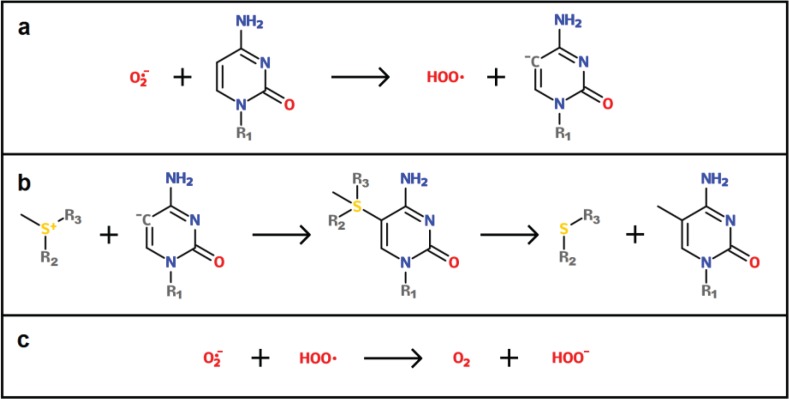Figure 2.
(a) A superoxide molecule deprotonates the 5-carbon atom of a cytosine base, leaving the carbon atom with a negative charge. R1 forms the rest of the DNA molecule to which the cytosine is attached. (b) The positively charged sulfur atom of SAM reacts with the C-5 atom. This reaction first yields a structure where SAM is covalently linked to cytosine, but then continues to form the two final products. R2 and R3 represent the rest of the SAM molecule. (c) Concurrently, the radical created during reaction (a) now reacts with another superoxide molecule, giving rise to dioxygen and hydroperoxyl. (Based on Afanasev [110]).

